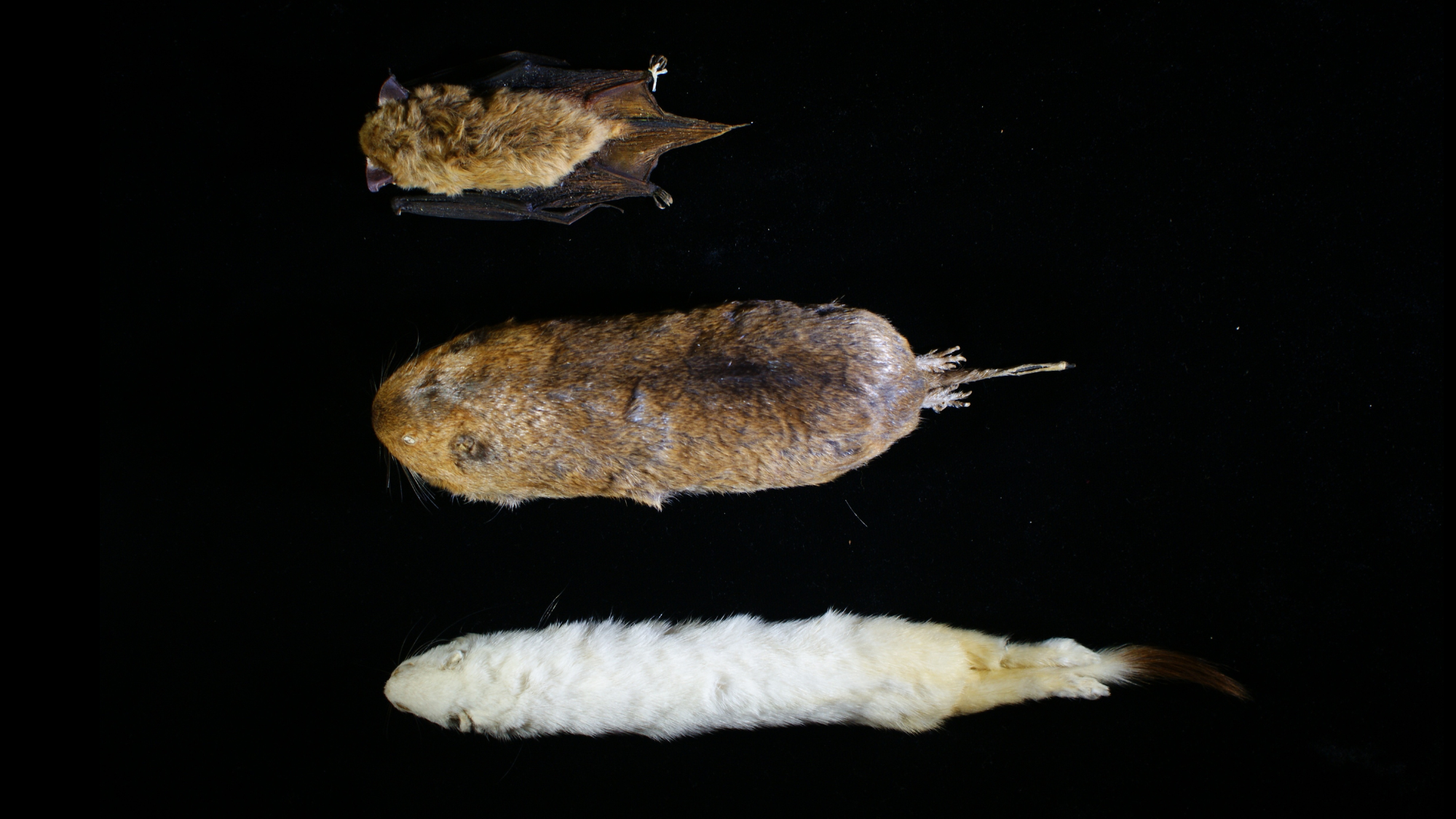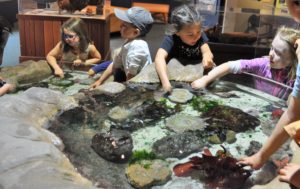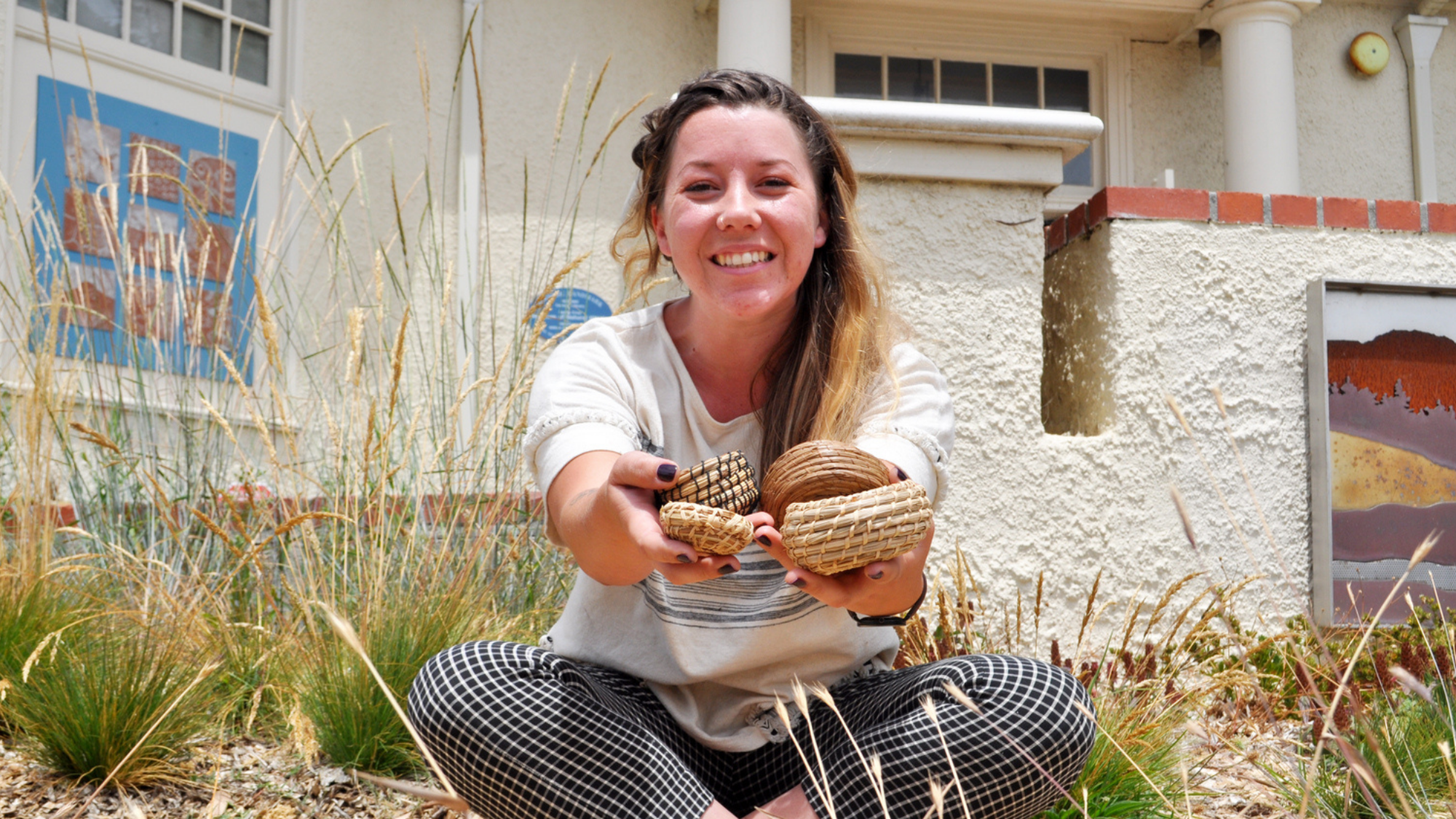A bat. A gopher. An ermine. This month we welcome these new additions to a special part of the Museum’s holdings: Our Education Collection. When we talk about our Collections, we often talk about the distinction between different kinds of objects, like our geology specimens or anthropological artifacts. Another significant line we draw is less about the nature of an item and more about the purpose such an item serves in the life of the Museum. In our primary Collections we include materials that are actively preserved and protected, whether they present a unique avenue of research or are simply too fragile to be handled without damage. Regardless of their condition, an important criteria for these “museum quality” items is that they are accompanied by sufficient data (e.g. field notes/locality, age, history of object, collector id, etc.) to form the basis for scientific research.
In contrast, the Education Collection consists of those specimens and artifacts that can engage more directly with the general public. Though we may have limited information about these individual specimens and artifacts, they can still support experiential learning through our programs, pop-ups and workshops. They include stones you can heft, furs you can feel, and jaws you can manipulate, all to gain a more hands-on and tactile observation of the natural world. When we are given the opportunity to accept a specimen donation, we gather as much information as we can about it to help us determine whether it belongs in the general Collections or in our Education Collection. If we expect items to be handled on a regular basis, we also consider whether they are safe to touch. Traces of arsenic from dated taxidermy processes sometimes linger in mounts and dioramas, for example.
When we were offered the specimens featured in this month’s Close-Up, we knew they were great candidates for our Education Collections because they already had a history of being handled. Gifted by a local teacher for the visually impaired, the donation included several small mammals, a bird skeleton and nest, and a red fox. In this context they have been used as an opportunity for blind and visually impaired students to gain a greater understanding of animals through touch. While these specimens were collected in various locations across the West Coast, we can trace their origin as instructional materials to the Palo Alto Unified School District.
The use of taxidermy in visually impaired education and programming has a long-standing presence in natural history museums. As early as 1913, the Sunderland Museum in the United Kingdom offered programs and classes for blind and visually impaired children and adults to touch animal specimens as well as historical and anthropological artifacts. Pictures of these programs are publicly available through the Tyne & Wear Archives and Museums’ Seeing through Touch photo collection. Similarly, in the digital collections of the American Museum of Natural History, a collection of photographs taken between 1914 and 1927 documents public school class visits for blind and visually impaired students. In these photos of what were mostly called “sight conservation classes,” you can see students clustered around a hippopotamus or handling globes of the Earth and Moon.
Today, teachers still use taxidermy to educate visually impaired students. Several decades-old specimens populate the library at the California School for the Blind, for example, where children can still explore them. These specimens range from a racoon to a coyote to a small pig, though a constant favorite is the bear. While they currently serve as an informal opportunity for students to gain experiential knowledge of animal traits, in previous years they have been used in formal classroom settings.
Stop by the Museum this month to get a feel for this Close-Up and the unique history these specimens represent.


 As many of you know, I will leave my position as Executive Director in late August to join my husband in the Pacific Northwest, where he has started an incredible new job opportunity. It is a bittersweet time for me as I prepare to leave this special museum and our wonderful community. As I reach the end of my tenure here, I have reflected on the many accomplishments our great team of staff, Board and volunteers has achieved since I took the lead in February 2015.
As many of you know, I will leave my position as Executive Director in late August to join my husband in the Pacific Northwest, where he has started an incredible new job opportunity. It is a bittersweet time for me as I prepare to leave this special museum and our wonderful community. As I reach the end of my tenure here, I have reflected on the many accomplishments our great team of staff, Board and volunteers has achieved since I took the lead in February 2015.